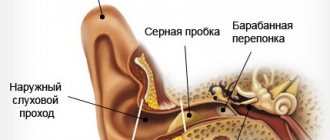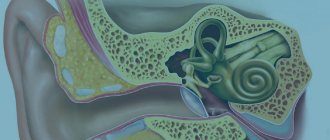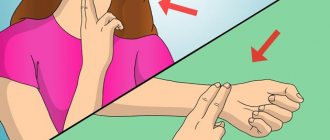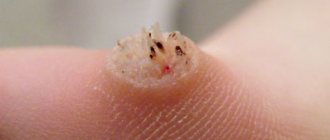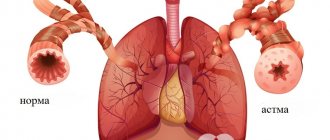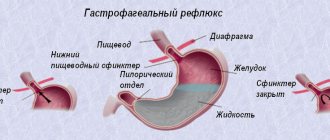Nasal congestion due to colds is an unpleasant and familiar phenomenon to everyone. Breathing becomes difficult, a runny nose bothers you, and later the temperature rises and your health worsens. But what is the reason if there are no cold symptoms, but the nose is stuffy? There are many provocateurs of this phenomenon.
Constant nasal congestion without runny nose: causes and treatment
Stuffy nose without runny nose. Causes
Most often, this is a sign of some disease that proceeds sluggishly and without pronounced symptoms. In this case, the disease is advanced and has become chronic. It is more difficult to treat. Another common cause is hormonal imbalance. For example, changes in hormonal levels during pregnancy often lead to impaired nasal breathing.
To relieve symptoms, you have to use a nasal decongestant. Without a runny nose, this stuffiness or excessive mucous discharge does not matter. A person cannot breathe normally in both cases. He needs help.
Constantly stuffy nose without a runny nose
Other factors leading to this problem include:
- Deviation of the nasal septum with the formation of longitudinal ridges. As a result, there is constant contact between the turbinates and the ridges or inner wall of the nasal wings. Swelling develops and breathing becomes difficult.
- Dry air, which dries out the nasal passages, which can cause inflammation of the nasal mucous membranes. Then atypical symptoms are observed during the course of another disease. Example: a person is sick with some type of rhinitis of an infectious nature, but the mucus in the nose dries out.
- Chronic sinusitis and sinusitis can also cause nasal congestion without a runny nose if the air is too dry.
- Foreign body - swelling of the mucous membrane develops due to mechanical irritation.
- Hormonal imbalance and the consequence of this is vasomotor rhinitis. The risk group is pregnant women whose levels of steroid hormones change. Also at risk are women during menopause and adolescents.
- Dry congestion due to prolonged and uncontrolled use of vasoconstrictors.
- Cases when mucus is secreted, but due to a disturbance in the outflow, it flows down the back wall of the pharynx.
- The result of side effects from taking certain medications.
- Nasal polyps or their formation.
- Proliferation of the mucous membranes of the nose.
- Some diseases of the pharynx, for example, adenoiditis.
- Bad habits (drinking alcohol and smoking).
- Diseases of the cardiovascular system.
- Deviation of the nasal septum.
- Malignant and benign tumors.
Important!
An ordinary runny nose of an infectious nature normally ends in one to three weeks. It does not matter whether there was heavy or not very heavy discharge or dry congestion was observed. If this does not happen, a visit to the doctor is required to determine the cause.
What to do?
If your nose is constantly stuffy, but there is no runny nose, you need to visit a specialist who will help you accurately determine the cause and select the required therapy. If the patient constantly has a stuffy nose due to the structural features of the nasal septum, then in this case only surgery will help correct the situation, before which you need to undergo a thorough examination. If your nose is stuffy due to a hormonal imbalance in the body, then the specialist selects the necessary medications, the action of which is aimed at normalizing hormone levels.
What to do if your nose is stuffy for a long time? Of course, you should visit a specialist who will select the correct treatment for nasal congestion, but if this is not possible, you can try to alleviate your condition with inhalations, nasal rinsing and therapeutic massage. If such an unpleasant manifestation occurs in a child, he should be provided with a sufficient amount of warm drinks, for example, tea with honey and raspberries or mint infusion. At the first opportunity, you need to show the child to a doctor, because children are more difficult to tolerate this phenomenon, and a lack of oxygen is extremely undesirable.
Nasal congestion in a child
This problem occurs quite often in children. Only a specialist can determine the exact cause. It is his responsibility to select treatment.
Causes of nasal congestion in children:
- allergy;
- dry indoor air;
- dilation of blood vessels due to frequent colds;
- thinning of the mucous membrane (atrophic rhinitis);
- adenoids or tonsils;
- foreign bodies in the nose;
- congenital curvature of the nasal septum;
- a side effect of treatment with certain medications;
- narrow nasal passages.
If a similar problem arises, the best solution is to contact a pediatrician who will prescribe the best medicine for nasal congestion. Without a runny nose, children may have congestion for various reasons (foreign body, polyps, congenital anomalies, etc.), so a visit to the doctor is mandatory.
4th reason: allergic reactions
Nasal congestion is very often caused by various allergic reactions, not only to the usual seasonal pollen (hay fever), but also to other fine particles. The fact is that allergic reactions can be characterized by both a prolonged runny nose and temporary nasal congestion after contact with an allergen.
For example, if a patient is allergic to animal hair and tries to avoid all breeds of dogs except hairless ones, then even after such contact he may experience an allergic reaction in the form of difficulty breathing through the nose. Why? Because dead particles of the epithelium of a hairless dog are also allergens similar to fur. And the patient may not even suspect allergic symptoms, justifying temporary discomfort with drafts or a mild cold.
There are cases when people become allergic to foods or personal hygiene items that have never caused unpleasant symptoms. The cause may be an untreated allergic reaction, which became stronger over time and began to add more and more substances to the list of allergens. In this case, you need to immediately begin treatment for allergies, otherwise nasal congestion will become its most minor symptom, and allergic reactions will eventually reach a critical level of complexity.
In order to determine why your nose is stuffy and what allergen causes this illness, you need to keep a diary. If, after each manifestation of an allergy, you write down those products or hygiene products that you previously used or consumed, you can easily find out the “culprit” of the unpleasant symptoms.
An allergist will help cure allergies and prescribe effective antihistamines or hormonal drugs. In addition, it is necessary to contact allergens as little as possible.
There is another type of allergy that causes nasal congestion - a response to medications. We are accustomed to the fact that some pharmaceutical drugs can have side effects on the patient's body. But it turns out that they can also cause an allergic reaction.
Studies show that when taking certain medications, the patient’s immune system reacts to the drugs as if they were an “enemy” and immediately begins to produce antibodies to them. Once the body recognizes the drugs as a foreign body, it begins to produce large amounts of histamine to clear it from the body.
Many people experience drug reactions after taking:
- penicillin or other types of antibiotics;
- iodine;
- barbiturates;
- drugs containing sulfur;
- insulin;
- anti-convulsants, etc.
In order to treat a drug allergy, it is first necessary to relieve the patient's symptoms. The very first drugs used against allergic reactions are antihistamines. If they do not help, then corticosteroids are prescribed. And medications that cause nasal congestion are replaced with safe drugs.
Nasal congestion during pregnancy
This is a very common problem associated with hormonal changes in women during this period.
Typically, rhinitis in women during pregnancy belongs to the group of non-infectious runny noses - vasomotor rhinitis (unless, of course, the woman has a cold or an infectious disease).
The main symptom is that the nose alternates between one and the other nostril. Unpleasant symptoms cause a lot of inconvenience, often intensifying towards the end of the gestation period. To prevent overwork, chronic fatigue and other negative factors, you should use nasal decongestants without runny nose, approved for pregnant women.
Diagnostics
To clarify the diagnosis, the doctor asks the patient about how long ago the symptoms appeared. Clarifies the possible relationship with potential allergens and conducts an examination:
- Anterior rhinoscopy - examination of the nasal cavity using nasal speculum. You can determine the appearance of polyps, neoplasms, deviated septum, the presence of chronic rhinitis and other problems.
- Posterior rhinoscopy - examination using a nasopharyngeal speculum. Allows you to see adenoids, the presence of formations in the nasopharynx, enlargement of the posterior ends of the inferior turbinates, etc.
- Examination using an endoscope. Gives a detailed picture of the condition of the entire nasal cavity, allows you to see the excretory anastomosis of the sinuses, the mouths of the auditory tubes and other structures and anomalies.
After the examination, the doctor prescribes additional laboratory and instrumental studies:
- X-ray of the paranasal sinuses. Allows you to see inflammation of the maxillary and frontal sinuses, as well as curvature in the bony parts of the septum, cysts and formations in the sinuses.
- CT or MRI. Gives a detailed picture of the condition of the nose and paranasal sinuses, allows you to assess the size of formations and their location.
- Allergy tests, immunoblotting, etc. are used by allergists to confirm the allergic nature of the disease and identify a specific allergen.
- General blood and urine tests. Allows you to clarify the presence of an inflammatory process in the body.
Complications
Complications of nasal congestion if competent treatment measures are not taken have an impressive list. Thus, in case of congenital anomalies or tumor processes, only surgical intervention can help the patient. Long-term nasal congestion significantly worsens the quality of life, leading to headaches, night snoring, insomnia, pressure surges, frontal sinusitis, sinusitis, etc. and so on. Nasal congestion without a runny nose, the treatment of which is mandatory, is not a trivial problem, as many people believe.
Hidden dangers and unpleasant consequences
Constant nasal congestion can cause extremely unpleasant complications, including:
- decreased sense of smell (in some cases absolute loss),
- frequent migraines,
- development of sinusitis,
- lack of sleep,
- snore,
- apathy, depression.
In order to eliminate this unpleasant manifestation, you must first determine why your nose is constantly stuffy. If it is an allergic reaction, eliminate the causes; if congestion occurs as an initial symptom of a cold, you need to start therapy. It is important to remember that prolonged congestion can provoke serious consequences, so there is no need to self-medicate.
How to treat your nose with medicinal inhalations
If you need to cure nasal congestion for children over 3 years old, I consider the best way to carry out inhalation as follows: pour water into an enamel bowl (temperature no higher than 40 ° C), add baking soda (a few pinches) and 2-3 drops of fir oils After this, ask the child to sit down so that his head is bowed over the composition, and cover it with a towel. He should breathe in the vapor for as long as it takes for the mucus and other nasal discharge to disappear.
Another, in my opinion, reliable way to eliminate nasal obstruction is to inhale the vapors of potatoes (boiled). I suggest this recipe:
- Wash the vegetables under running water.
- Boil them.
- Without draining the liquid, cover the pan with a lid.
- Place the dishes on the table.
- Cover yourself with a towel and bend over the potatoes.
- Inhale the vapors, and breathe deeply.
Attention! It is recommended to complete the procedure only after sweat appears on the skin. It is necessary to start it in the absence of high body temperature (from 37).
The most effective recipes
Very often, discharge from the nasal passages begins after the feet get wet or cold. To prevent rhinitis, it is recommended to take a bath or make a warm foot bath with mustard.
However, if the disease has already begun, this method will be ineffective. The best methods in this situation are rinsing the nasal cavity with infusions of medicinal herbs, inhalation and instillation.
Burying
Nasal drops help very quickly. For instillation, you can use a solution of sea salt. You can prepare the solution yourself or buy it at a pharmacy. You can also bury your nose with carrot juice, beetroot juice, a mixture of garlic juice and sunflower oil, a mixture of olive oil and chopped bay leaf.
Recipes for mixtures for instillation into the nose
| Components | ratio | how many times to put in each nostril | how often to instill |
| Aloe juice, honey | 1:1 | 2 | 3 times a day |
| Kalanchoe juice, water | 1:1 | 3 | 3 times a day |
| garlic and carrot juice | 1:1 | 2 | every 2 hours |
| camphor oil, 10% propolis tincture, sunflower oil | 1:1:1 | 3 | 3 times a day for a week |
| onion juice, water | 1:3 | 1 | 4-5 |
| beet juice, water | 1:1 | 3 | 3 |
| carrot juice water | 1:1 (for children – 1:2) | 1 | every 3 hours |
| beet juice, honey | 3:1 | 2 | in 6 hours |
| camphor oil | 2-3 | 2-3 times a day |
Under no circumstances should you instill pure juice of onions, garlic, Kalanchoe, or beets, as it can cause a burn to the mucous membrane of the nasal cavity.
It is necessary to use mixtures for instillation into the nose immediately after their preparation.
Inhalations
Steam inhalations are also very useful for a runny nose. For these procedures, you can take infusions of coltsfoot, calendula, plantain, pine buds, eucalyptus, lavender, tea tree, fir mint. To prepare an infusion of essential oils, add 2-3 drops of oil to 300 ml of water. To prepare an infusion of chamomile and sage, take 1 tbsp. vegetable raw materials per 1 liter. water. To prepare an infusion of pine buds and soda solution, take 1 tbsp. raw materials per 500 ml. water.
It is best to use a nebulizer for inhalation. However, inhalation can also be carried out using a kettle with a cardboard cone inserted into the spout. Or bend over a container of broth, cover your head with a towel and inhale the broth through your nose. It is important to ensure that the steam is not too hot and does not burn. Inhalation of hot boiled potatoes with peel is also popular. Before the procedure, the water in which the potatoes were boiled must be drained.
Ointments
Ointments also bring a significant effect for a runny nose and are among the most effective methods of therapy. Its only drawback is the relative complexity of preparation.
To prepare lemon ointment, you need to take two lemons with zest and grind them in a blender. Without ceasing to beat the mass, pour a tablespoon of honey and sunflower oil into it. The finished composition must be placed in a jar and stored in the refrigerator. It is necessary to lubricate the inner surfaces of the nostrils with ointment in the morning and evening.
To prepare another ointment you will need 100 ml of olive oil and honey, 2 g of wax, 2 tablets of mumiyo and streptocide, 2 g of propolis. First, honey, wax and oil are heated in a saucepan, and then the powdered tablets and propolis are poured into this mixture. After stirring, the ointment is ready. The ointment should be used to periodically lubricate the nasal passages.
Washing
The most effective methods of combating rhinitis include rinsing the nasal cavity. They are best done with a douche or syringe. It is necessary to rinse each nostril in turn; you cannot pour the solution into both nostrils at once. It is best to rinse the nasal cavity so that the solution poured into one nostril flows out of the other. To do this, you need to turn your head so that one nostril is at the top and the other is at the bottom. The procedure is repeated for each nostril. You can do washing in another way. The solution is drawn into the nostril, and then this nostril is pinched. After this, the solution should pour out of the other nostril.
To prepare the solution, you need to take 200 ml of water and dissolve a third of a teaspoon of sea salt in it. Another composition is also used - add 1 tsp to a glass of water. salt, 0.5 tsp soda, 5 drops of iodine. You can also use chamomile, sage or calendula for rinsing. To prepare the infusion, take 25 g of plant material per 300 ml of boiling water.
Many doctors, however, do not recommend doing the rinsing yourself. The fact is that if improperly washed, there is a risk of mucus from the nasal cavity entering the Eustachian tube and the development of otitis media.
Decoctions and infusions of herbs, juices
They are consumed internally. Drinking decoctions and infusions is an additional method of therapy in relation to local remedies - rinsing, instillation, inhalation, etc.
What decoctions and infusions of herbs are useful to drink for rhinitis:
- mint,
- chamomile flowers,
- linden flowers,
- string leaf,
- Oak bark,
- rosehip berries,
- currant or lingonberry branches.
Photo: congerdesign / pixabay.com
Also, for rhinitis, they drink infusions from medicinal herbs (coltsfoot, wild rosemary, thyme, plantain, linden flowers, marshmallow root, black elderberry flowers, licorice root), a mixture of viburnum juice and honey.
Herbal teas based on:
- linden flowers,
- currant berries,
- rose hips with honey,
- mint.
Cotton swabs
Tampons impregnated with medicinal compounds are inserted into the nasal passages for rhinitis. For impregnation, you can use carrot, aloe or beet juice, burdock root tincture. Cotton swabs are left in the nostrils for 3 hours, then replaced with fresh ones. It is important that the tampons are large enough. Otherwise, there is a risk that they may fall into the nasal cavity, from where it will be impossible to remove them on your own.
Warming up and foot baths
This method involves applying warm objects to the nose, bridge of the nose and sinuses. To warm up, you can use salt and boiled eggs. It is necessary to wrap them in cloth so that the patient does not get burned.
However, with rhinitis, you can warm not only your nose, but also your feet. For this purpose, mustard plasters are often used, which are wrapped in fabric and applied to the feet. You can also do foot baths (ankle-deep or knee-deep in the bath). In this case, the water temperature should not exceed +45°C. You can add mustard powder or sea salt solution to the bath. The procedure lasts 15 minutes. After its completion, the legs must be wrapped in a blanket.
Foot baths are contraindicated for varicose veins, fever, and diabetes.
Snuff mixtures
This method is a type of inhalation. However, the difference is that the drugs in snuff mixtures are placed in a small jar. For inhalation, the patient opens the can and draws in the air filled with medicinal aerosols through his nose.
Dried and crushed shoots and flowers of lily of the valley can be used as healing agents. You should sniff this composition 5 times a day. You can also use finely chopped garlic, onion, or horseradish. This mixture is sniffed first 4 times an hour, then 1-2 times an hour.
Wash solutions
You can prepare medicines to cleanse the nasal passages yourself. They are used as a washing procedure, which allows you to remove mucus and snot, as well as treat hard-to-reach areas of the mucous membrane. There are several safe and healthy recipes that you can make yourself:
- aqueous solutions of salt - table salt, but it is better to purchase sea salt;
- soda with water - cleanses the nose and disinfects the mucous membrane;
- a weak aqueous solution with the addition of propolis tincture;
- herbal decoctions;
- Furacilin is one of the most affordable pharmaceuticals;
- a product with the addition of sea salt, soda and a few drops of iodine is one of the most complex and effective;
- pharmaceutical medications (Rotokan, Elekasol).
The rinsing solution should be at room temperature. Too warm a liquid burns and damages the mucous membrane of the nasal passages and can cause an exacerbation. This is a very effective procedure if breathing is impossible due to the accumulation of mucus in the nasal passages. However, it cannot be carried out constantly - no more than 2-3 times a day for a week.
Treatment with folk remedies
As a distraction therapy for nasal congestion, it is recommended to take hot foot baths, warm compresses or mustard plasters on the feet, and drink as much hot water as possible.
An alternative to medicinal nasal drops is Kalanchoe juice. These homemade drops will help get rid of the disease in just a few days. Instead of Kalanchoe juice, you can use beet juice, which allows you to relieve swelling of the mucous membrane in a short time.
Massage will help relieve nasal congestion. To do this, you need to massage the wings of the nose, the bridge of the nose, the point between the nose and upper lip, and the temples. The best effect will be from a massage using Zvezdochka balm, which has a warming effect. But it should be remembered that this product cannot be used on mucous membranes, as a burn may occur.
Nasal congestion can be quickly relieved by rinsing. This procedure is aimed at cleansing the nasal cavity, as well as moisturizing it. For rinsing, use simple boiled water, sea salt solution or preparations such as Aquamaris. You can rinse your nose with water infusions of medicinal herbs (chamomile, St. John's wort, eucalyptus, string, calendula).
Do not forget about such a treatment method as heating. To do this, take hot eggs or a bag of warm salt or sand.
Steam inhalations also help improve nasal congestion. The procedure is carried out using medicinal herbs and essential oils. Calendula infusion mixed with garlic juice helps very well.
Another equally effective inhalation is steam inhalation over boiled potatoes. To carry out the procedure, you need to boil the potatoes in their jackets, drain the water and breathe over the steam for fifteen to twenty minutes, covered with a blanket or towel.
Antibiotics for the treatment of sinusitis
This article will tell you how to treat sinusitis at home.
Symptoms and treatment of cardiac cough //drlor.online/diagnostika-lechenie/kashel/serdechnyj-prichiny-vozniknoveniya-simptomy.html
